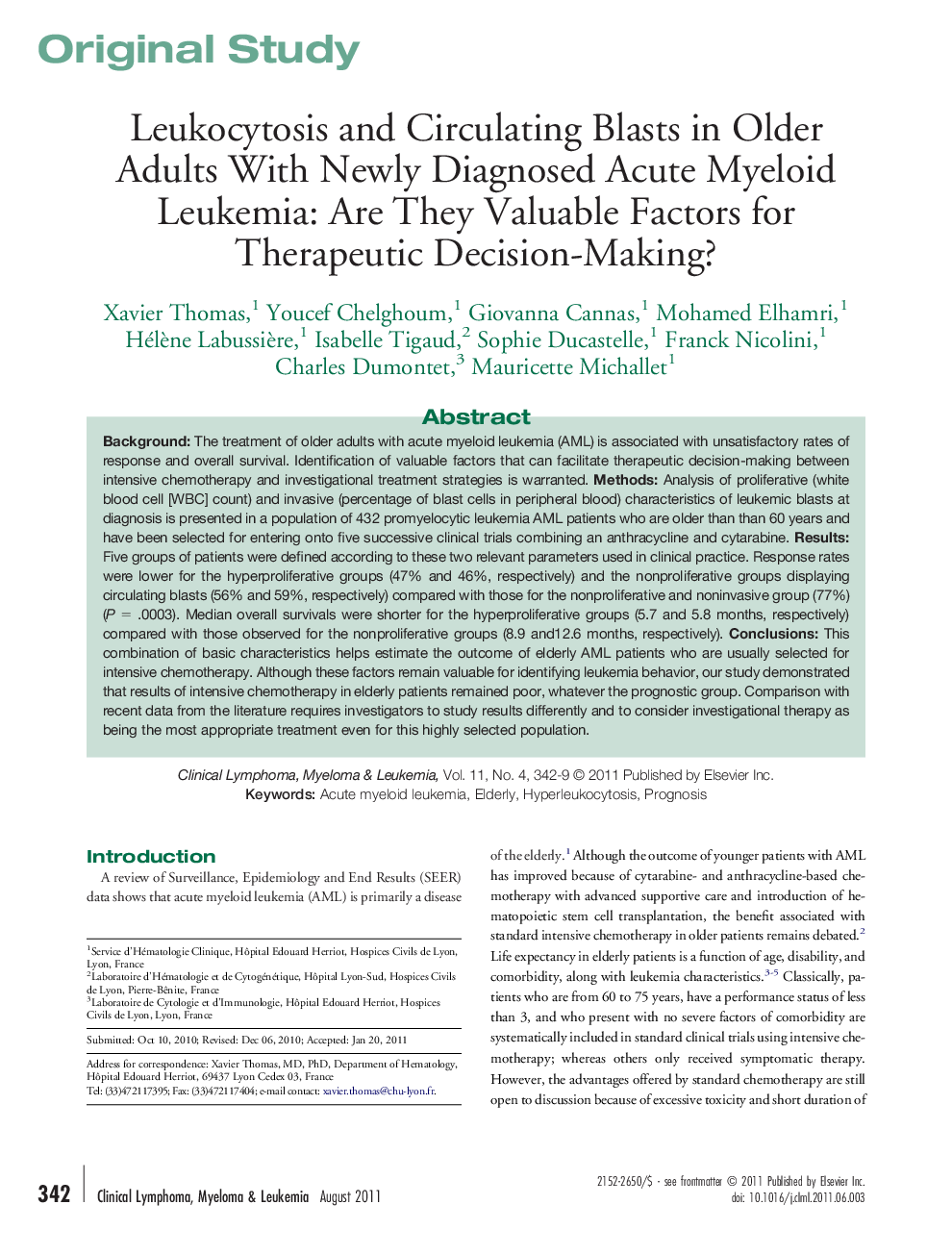| Article ID | Journal | Published Year | Pages | File Type |
|---|---|---|---|---|
| 2754563 | Clinical Lymphoma Myeloma and Leukemia | 2011 | 8 Pages |
BackgroundThe treatment of older adults with acute myeloid leukemia (AML) is associated with unsatisfactory rates of response and overall survival. Identification of valuable factors that can facilitate therapeutic decision-making between intensive chemotherapy and investigational treatment strategies is warranted.MethodsAnalysis of proliferative (white blood cell [WBC] count) and invasive (percentage of blast cells in peripheral blood) characteristics of leukemic blasts at diagnosis is presented in a population of 432 promyelocytic leukemia AML patients who are older than than 60 years and have been selected for entering onto five successive clinical trials combining an anthracycline and cytarabine.ResultsFive groups of patients were defined according to these two relevant parameters used in clinical practice. Response rates were lower for the hyperproliferative groups (47% and 46%, respectively) and the nonproliferative groups displaying circulating blasts (56% and 59%, respectively) compared with those for the nonproliferative and noninvasive group (77%) (P = .0003). Median overall survivals were shorter for the hyperproliferative groups (5.7 and 5.8 months, respectively) compared with those observed for the nonproliferative groups (8.9 and12.6 months, respectively).ConclusionsThis combination of basic characteristics helps estimate the outcome of elderly AML patients who are usually selected for intensive chemotherapy. Although these factors remain valuable for identifying leukemia behavior, our study demonstrated that results of intensive chemotherapy in elderly patients remained poor, whatever the prognostic group. Comparison with recent data from the literature requires investigators to study results differently and to consider investigational therapy as being the most appropriate treatment even for this highly selected population.
